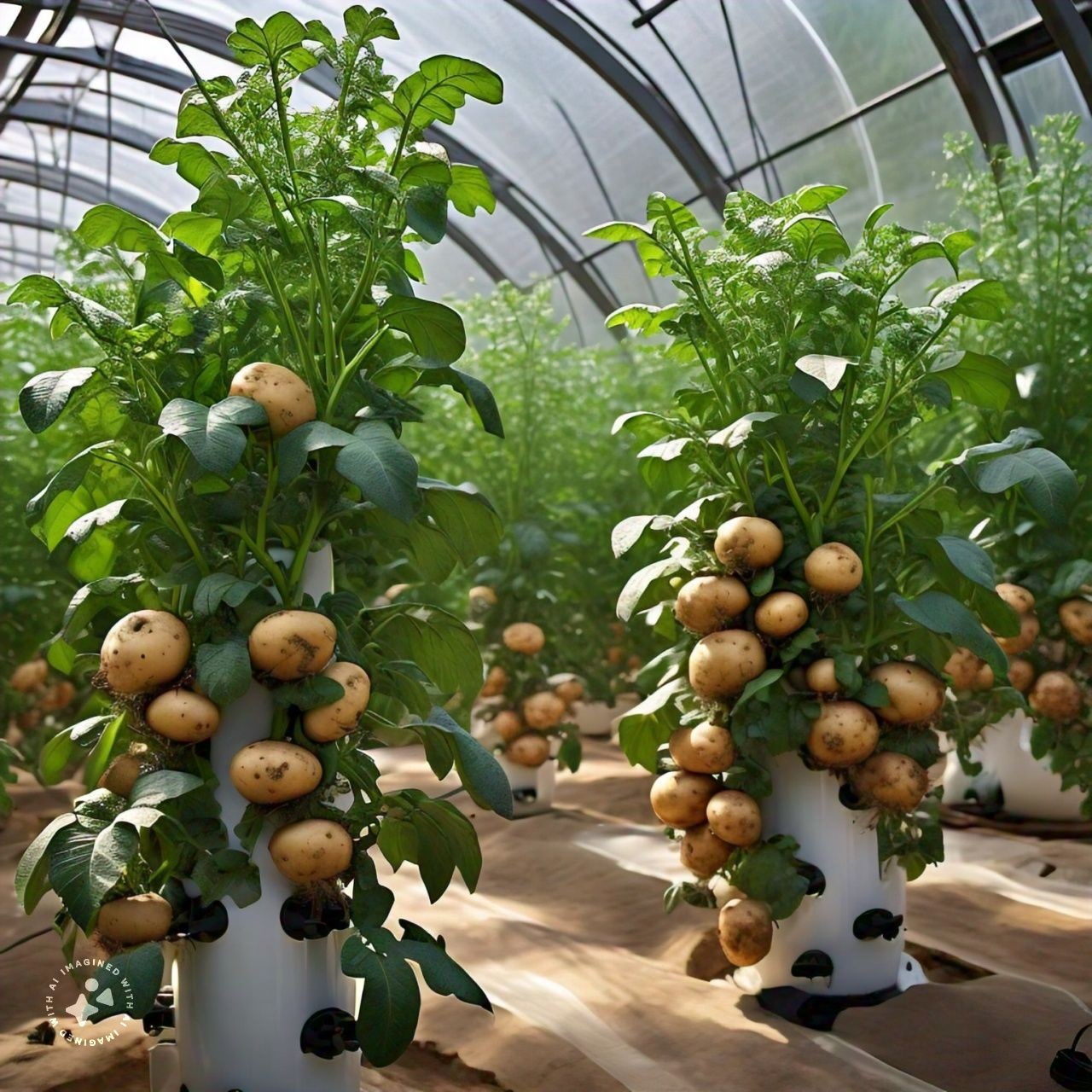 |
| Image Credit: AI |
Dr. B. Hussain
The concept of growing potatoes in
air may sound futuristic, but it's a revolutionary approach to potato farming
that's gaining traction for its efficiency and sustainability. In this article,
we explore the innovative technique of growing potatoes without soil, its
benefits, and how you can get started.
1. Understanding Aeroponic Potato Farming:
Aeroponics is a soilless farming
method where plants are grown in an air or mist environment without the use of
soil. In aeroponic potato farming, potato plants are suspended in air or a mist
chamber, with their roots exposed to a nutrient-rich mist that provides
essential nutrients for growth.
2. Benefits of Growing Potatoes in Air:
Higher Yields: Aeroponic potato
farming has shown to yield higher potato production compared to traditional
soil-based methods, thanks to optimized nutrient delivery and controlled
environmental conditions.
Water Efficiency: This method
conserves water as the nutrient solution is recycled in a closed-loop system,
reducing water usage significantly.
Space Saving: Aeroponic systems
take up less space than traditional farms, making them suitable for urban
farming and maximizing land use.
Reduced Pests and Diseases: With no
soil contact, aeroponic potato farming minimizes the risk of soil-borne pests
and diseases, leading to healthier crops.
3. Steps to Grow Potatoes in Air:
Here's a simplified guide to starting your aeroponic potato farm:
Gather Your Supplies: You'll need a container for the
nutrient solution (think bucket or tote), an air pump, mister nozzles, a
growing chamber (think PVC pipes or a grow box), and a growing medium for the
potatoes (like coco coir or rockwool).
Set up an aeroponic system: Invest
in a suitable aeroponic system or build one using readily available materials.
Prepare nutrient solution: Create a
nutrient-rich solution containing essential elements like nitrogen, phosphorus,
and potassium.
Set Up the Growing Chamber: Design your chamber to allow for
airflow and light access for the potato plants. The mister nozzles will be
positioned within the chamber to spray the nutrient solution onto the roots.
Plant potato seedlings: Place
potato seedlings or cuttings into the aeroponic system, ensuring their roots
are exposed to the nutrient mist.
Maintain optimal conditions:
Monitor and adjust environmental factors such as humidity, temperature, and
light to ensure optimal growth.
Harvest and enjoy: Harvest your
aeroponically grown potatoes when they reach maturity, typically in a few
months, and savor the fresh, nutrient-rich produce.
There are also some additional factors to be taken into consideration:
Provide Adequate Lighting: Potatoes need around 12-14 hours
of daily light. Consider using LED grow lights if natural sunlight is limited.
Control the Temperature: Maintain a consistent temperature
between 60-70°F (15-21°C) for optimal potato growth.
Pollination: For some potato varieties, hand pollination
might be necessary to encourage tuber formation. Research the specific needs of
your chosen potato variety.
4. Tips for Successful Aeroponic Potato Farming:
- Choose suitable potato varieties known for their adaptability to aeroponic growing conditions.
- Regularly monitor nutrient levels and pH of the nutrient solution to maintain plant health.
- Provide adequate support for potato plants as they grow to prevent toppling in the aeroponic system.
- Clean and sanitize the aeroponic system periodically to prevent algae buildup and ensure hygienic growing conditions.
Growing potatoes in air through aeroponic farming presents an innovative and sustainable approach to potato cultivation. With its potential for higher yields, water efficiency, and space-saving benefits, aeroponic potato farming is a promising solution for meeting the growing demand for food production while minimizing environmental impact.

Post a Comment